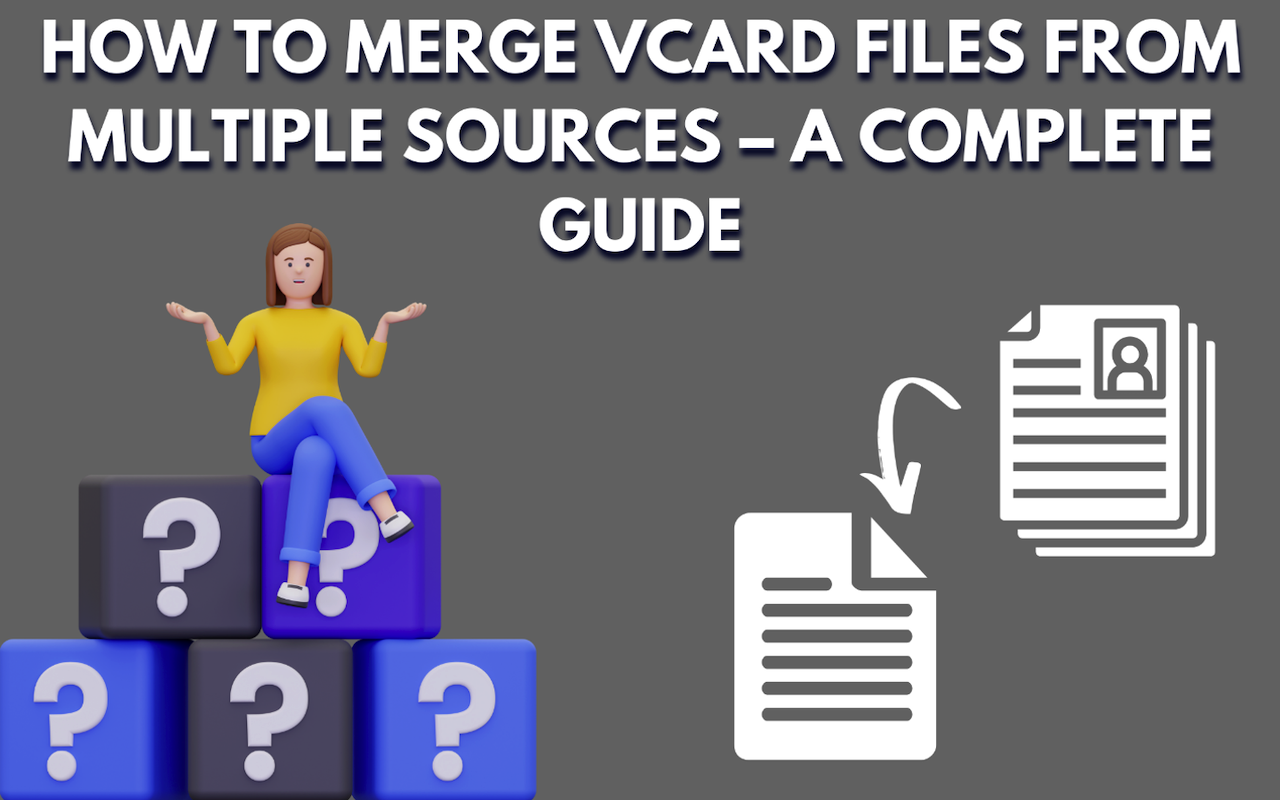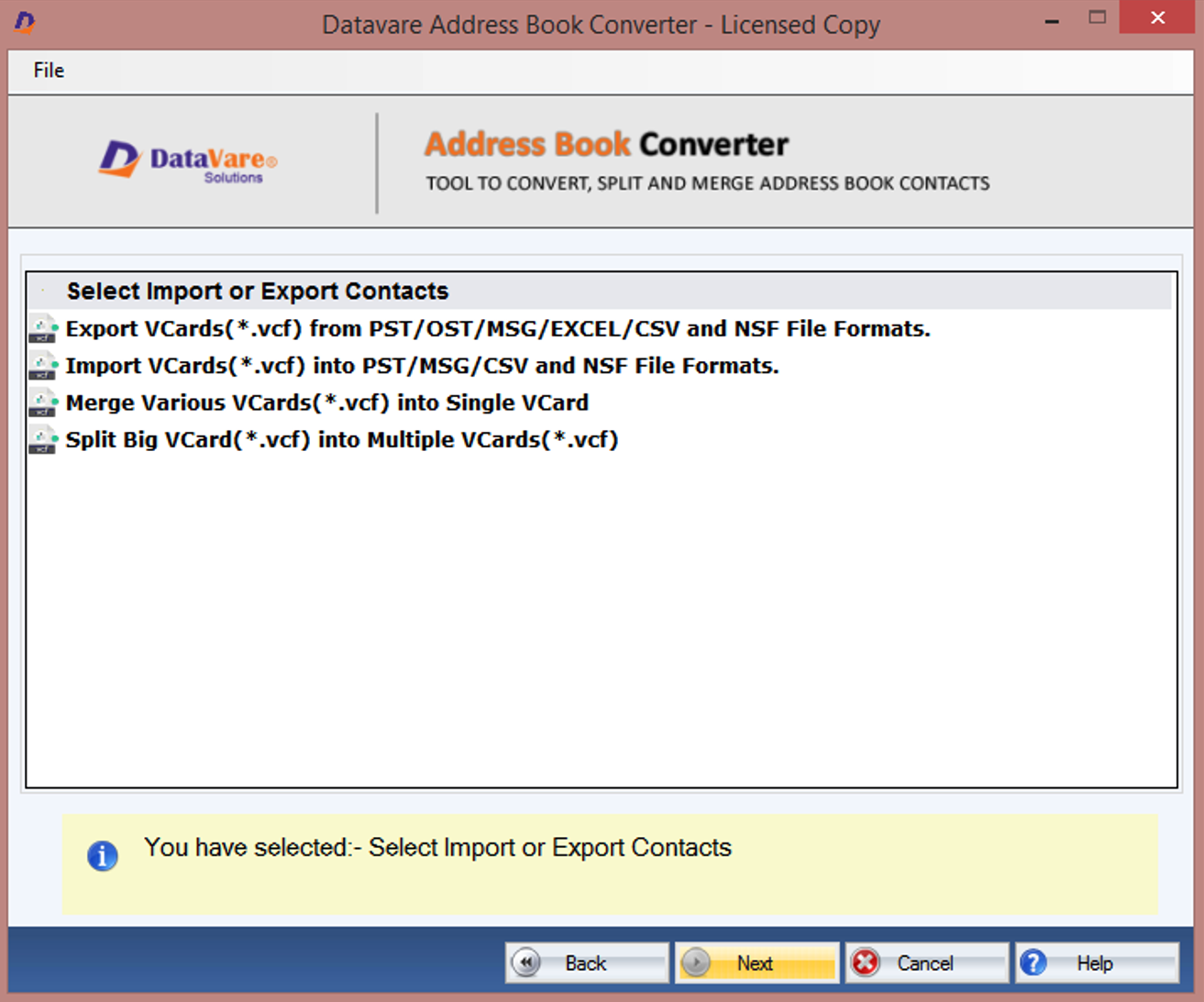
This tutorial guides you in combining many vCard files from various platforms into one VCF file. Combining vCard files guarantees improved organization and efficiency whether to handle contacts on several devices, email accounts, or cloud services. A VCF file can store multiple contacts, including names, phone numbers, addresses, and email IDs. Transferring and backing up contact information is simple with this format. Managing multiple vCard files can be overwhelming. Combining them into a single VCF file improves backup management, minimizes duplication, and helps to preserve contacts in organized order.
Additionally, users must select an appropriate procedure in order to integrate VCF files. Professional software is suggested to be used as it is the most reliable method for doing this. There are several online programs available to users for mixing vCard files.
Many users worry about privacy when using online tools. To address this, experts developed the VCF Merger program, ensuring secure and efficient contact management.
What are vCard files?
A vCard file is a file that refers to a digital version of a business card or contact information file. This standardized format is used to save and share information, which can contain a person's name, phone number, email address, and other contact information. Moving from a device to another or sharing an email is a straightforward process. When users view a vCard file, it shows the individual's contact information in an orderly manner. Users have the ability to save a vCard file directly to the contacts list. It often has the file extension .vcf. The vCard format is supported on virtually all operating systems including Windows, macOS, Linux, Android and iOS.
Why do we Merge vCard Files?
Merging digital contact cards consolidates multiple contact lists into a single, well-organized VCF file. This helps prevent duplicates, makes sharing easier, and improves backup efficiency. Here are some basic reasons people do this:
- Eventually, for the same person or company, users might have several vCard files spread throughout multiple files. Combining these will help them to keep everything in one place and prevent losing important contact data.
- If users have many vCard files from different sources—such as email, social media, or another device—it is easier to keep and update all of the contacts in one file.
- Occasionally, anyone could unintentionally make two contact entries for the same individual. By combining the vCard files, it is simple to identify and eliminate these duplicates, maintaining an organized contact list.
- Combining vCard files and maintaining one file helps to back up all the contacts more easily if something happens to the phone or PC. Users won't have to concern themselves about missing important contact information.
- If someone wants to share contact information with others, sharing a single merged file instead of numerous separate ones is much easier. Sharing becomes more efficient and time-saving.
- If contact information changes, like a phone number or address, merging vCard makes it easier to update the entire list. Users only need to edit one combined file rather than multiple files.
Simply said, merging vCard saves time in maintaining, sharing, and storing contact data, minimizes errors, and keeps the contacts ordered.
1. A Manual Method to Merge vCard Files into a Single VCF File
You may simply concatenate multiple VCF files by using the copy (Windows) or cat (Lunux and macOS) command-line tools. Alternatively, you may use a text editor such as notepad (Windows), notes (macOS), or any text editor on Linux such as vi and emacs. You'll have to ensure each file is separated by a line break when concatenated into a single file. In Windows, you may use the Contacts application to import multiple vCard files into a single file.
After combining multiple vCard files into a single file, open the Contacts application within your OS, and import the merged vCard into your application.
2. An Expert Method to Merge vCard Files into a Single VCF File
Users can simplify the process of merging vCard files by utilizing third-party software. One such tool is the DataVare Address Book Converter, which allows users to combine multiple vCard files into a single VCF file with ease. This merging application is compatible with the Windows operating system and provides a risk-free approach to managing contacts efficiently. With its user-friendly interface, users can effortlessly merge VCF files, making it an ideal solution for both technical and non-technical users. While these features are commonly found in many vCard merging solutions, we will provide an example using DataVare Address Book Converter, as it follows similar steps to other tools.
Steps to merge vCard using DataVare
- Install and set up the application on the PC.
- Click the Merge vCard option to add the contacts.
- Browse the VCF files you want to integrate.
- Select where to store the newly created file.
- Click the Convert Now button to merge vCard files.

Why Choose Third-party Software?
Various third-party tools are available to help users merge vCard files from multiple sources, such as email clients, cloud-based applications, PCs, and mobile devices. These tools generally do not impose file size restrictions, allowing users to process and export large amounts of contact data effortlessly. They also ensure that all essential contact fields—including first name, last name, address, phone number, and email address—remain intact and unaffected during the merging process.
Most vCard merging tools provide flexible file-loading options. Typically, users can either select multiple files individually or choose an entire folder at once for batch processing. These tools often support vCard versions 2.1, 3.0, and 4.0, making it easy to merge and export contact files across different platforms. Additionally, users can specify a custom destination path for storing the output file.
- Automated Merging Process: Instead of manually combining vCard files, third-party tools streamline the process, ensuring faster and more efficient merging.
- Accurate and Error-Free Results: These tools eliminate common issues such as duplicate contacts, formatting errors, or missing information, ensuring a clean and structured contact list.
- User-Friendly Interface: Most professional vCard merging tools come with an intuitive interface, making them accessible for both beginners and advanced users.
- Data Integrity & Security: These applications ensure that all contact details, including names, addresses, phone numbers, and emails, remain intact and secure throughout the merging process.
- Time-Saving Alternative: Manually integrating multiple vCard files can be a tedious and time-consuming task. Third-party tools provide a hassle-free, one-click solution.
- Technical Support Availability: In case of any issues, many professional software providers offer 24/7 technical assistance to help users troubleshoot and resolve problems.
Conclusion
Merging multiple vCard files into a single VCF file enhances contact organization, reduces duplication, and simplifies data management across various platforms. This guide has outlined both manual and automated methods for merging vCard files, allowing users to choose the most suitable approach based on their needs. While the manual method can be effective for users comfortable with command-line tools, third-party software provides a more efficient, error-free, and user-friendly alternative, ensuring seamless integration of contact data.
Share this post
Leave a comment
All comments are moderated. Spammy and bot submitted comments are deleted. Please submit the comments that are helpful to others, and we'll approve your comments. A comment that includes outbound link will only be approved if the content is relevant to the topic, and has some value to our readers.


Comments (0)
No comment